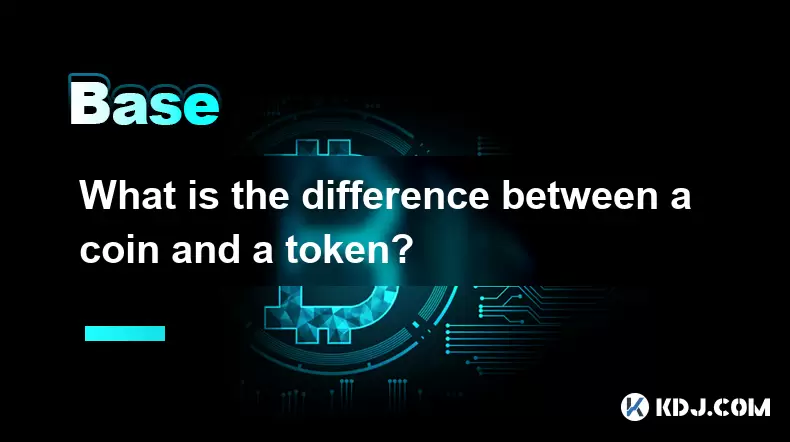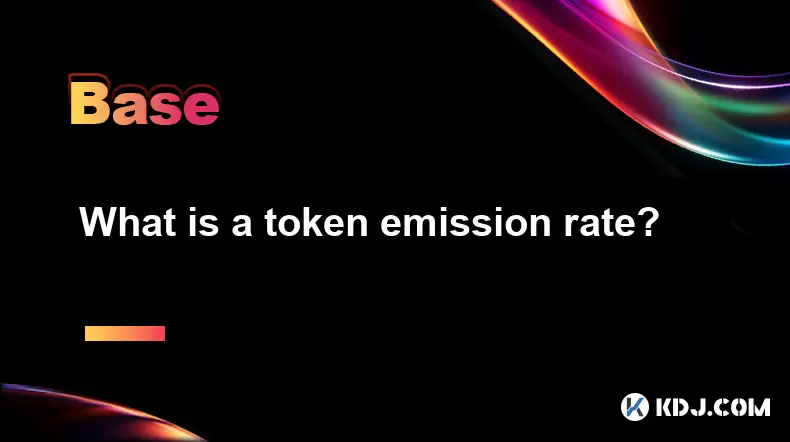-
 Bitcoin
Bitcoin $108,562.4295
0.46% -
 Ethereum
Ethereum $2,533.9553
1.52% -
 Tether USDt
Tether USDt $1.0002
-0.01% -
 XRP
XRP $2.2542
2.23% -
 BNB
BNB $662.4567
1.48% -
 Solana
Solana $151.4114
3.48% -
 USDC
USDC $0.9999
0.00% -
 TRON
TRON $0.2860
0.91% -
 Dogecoin
Dogecoin $0.1685
3.72% -
 Cardano
Cardano $0.5809
1.63% -
 Hyperliquid
Hyperliquid $39.2916
1.85% -
 Sui
Sui $2.8874
0.85% -
 Bitcoin Cash
Bitcoin Cash $496.5801
2.72% -
 Chainlink
Chainlink $13.3582
2.48% -
 UNUS SED LEO
UNUS SED LEO $9.0279
0.07% -
 Avalanche
Avalanche $18.0773
2.30% -
 Stellar
Stellar $0.2426
3.05% -
 Toncoin
Toncoin $2.9086
6.01% -
 Shiba Inu
Shiba Inu $0.0...01170
2.97% -
 Hedera
Hedera $0.1587
3.47% -
 Litecoin
Litecoin $87.4596
1.13% -
 Monero
Monero $317.0425
0.73% -
 Polkadot
Polkadot $3.3778
1.90% -
 Dai
Dai $0.9999
-0.01% -
 Ethena USDe
Ethena USDe $1.0001
-0.01% -
 Bitget Token
Bitget Token $4.4095
0.63% -
 Uniswap
Uniswap $7.3593
6.80% -
 Pepe
Pepe $0.0...09910
3.64% -
 Aave
Aave $274.7388
2.68% -
 Pi
Pi $0.4607
0.48%
What is the difference between a coin and a token?
Cryptocurrencies like Bitcoin and Ethereum are coins native to their own blockchains, while tokens, such as ERC-20s, operate on existing networks and serve diverse functions in decentralized ecosystems.
Jul 07, 2025 at 03:50 am

Understanding the Fundamentals of Cryptocurrency
In the world of cryptocurrency, two terms often come up: coin and token. While they are sometimes used interchangeably, they have distinct characteristics that set them apart. Understanding these differences is essential for anyone looking to navigate the crypto space effectively.
A coin operates on its own blockchain. Examples include Bitcoin (BTC), Ethereum (ETH), and Litecoin (LTC). These coins are native to their respective blockchains and primarily serve as a medium of exchange or store of value. When you send or receive Bitcoin, the transaction is recorded directly on the Bitcoin blockchain.
The Role of Tokens in the Ecosystem
Unlike coins, tokens do not have their own blockchain. Instead, they are built on existing blockchains such as Ethereum, Binance Smart Chain, or Solana. Tokens can represent various assets or utilities within a specific project or platform. For example, ERC-20 tokens operate on the Ethereum network and are commonly used for fundraising through Initial Coin Offerings (ICOs) or to grant access to decentralized applications (dApps).
Tokens can be further categorized into different types, including utility tokens, security tokens, and non-fungible tokens (NFTs). Each type serves a unique purpose within its ecosystem. Utility tokens provide users with access to a product or service, while security tokens represent ownership in an asset, similar to traditional stocks. NFTs, on the other hand, are unique digital assets that signify ownership of a specific item or piece of content.
Technical Distinctions Between Coins and Tokens
From a technical standpoint, coins are created through mining or staking mechanisms tied directly to their blockchain’s consensus protocol. For instance, Bitcoin uses Proof of Work (PoW), while Ethereum has transitioned to Proof of Stake (PoS). This process ensures the security and decentralization of the network.
Tokens, however, are typically generated using smart contracts on top of another blockchain. Developers use standards like ERC-20 or BEP-20 to create tokens without having to build an entirely new blockchain from scratch. This allows for faster development cycles and easier integration with existing platforms and wallets.
Use Cases and Practical Applications
Coins generally function as digital money, enabling peer-to-peer transactions without the need for intermediaries. They are widely accepted as a form of payment across various platforms and services. Some projects also use coins as governance tools, allowing holders to vote on network upgrades or decisions.
Tokens, by contrast, are more versatile. They can represent real-world assets like gold, real estate, or even shares in a company. Governance tokens give holders the right to propose and vote on changes within a decentralized autonomous organization (DAO). Additionally, DeFi tokens power decentralized finance protocols, offering lending, borrowing, and yield farming opportunities.
How to Differentiate Between Coins and Tokens
To determine whether an asset is a coin or a token, consider the following:
- Check the blockchain it operates on — if it's native to its own blockchain, it's a coin; if it runs on another blockchain, it's a token.
- Review its primary function — coins are mainly used for transactions, while tokens serve broader purposes within specific ecosystems.
- Examine how it was created — coins require mining or staking, whereas tokens are minted via smart contracts.
This distinction helps investors and developers better understand the underlying technology and potential use cases of each asset.
Wallet Compatibility and Storage Considerations
When storing cryptocurrencies, it’s important to know whether you're dealing with a coin or a token. Coins usually require wallets compatible with their specific blockchain, such as Bitcoin Core for BTC or Geth for ETH. These wallets interact directly with the blockchain to send and receive funds.
Tokens, being built on top of other networks, can often be stored in multi-chain wallets like MetaMask, Trust Wallet, or Ledger Live. However, you must ensure that the wallet supports the specific token standard (e.g., ERC-20, BEP-20) and the underlying blockchain it resides on. Sending a token to a wallet that doesn’t support its standard may result in lost funds.
Frequently Asked Questions
Q: Can a token become a coin?
Yes, some projects initially launch as tokens on platforms like Ethereum but later develop their own blockchain and migrate to become independent coins. A notable example is Binance Coin (BNB), which started as an ERC-20 token before moving to the Binance Chain.
Q: Are all tokens built on Ethereum?
No, although many tokens are created using Ethereum’s ERC-20 standard, other blockchains like Binance Smart Chain (BEP-20), Solana, and Avalanche also support token creation through their own standards.
Q: Do tokens have less value than coins?
Not necessarily. The value of a cryptocurrency depends on factors like demand, utility, market capitalization, and adoption. Some tokens have higher market values than certain coins due to their specific use cases and popularity within their ecosystems.
Q: How do I know if my asset is a coin or a token when checking a blockchain explorer?
You can verify this by visiting a blockchain explorer like Etherscan for Ethereum-based assets. If the transaction details show it's interacting with a smart contract rather than the native chain, it's likely a token.
Disclaimer:info@kdj.com
The information provided is not trading advice. kdj.com does not assume any responsibility for any investments made based on the information provided in this article. Cryptocurrencies are highly volatile and it is highly recommended that you invest with caution after thorough research!
If you believe that the content used on this website infringes your copyright, please contact us immediately (info@kdj.com) and we will delete it promptly.
- Elon Musk, Andrew Yang, and Polymarket: What's the Buzz?
- 2025-07-07 10:30:12
- Lightchain AI's Bonus Round: The Final Chance Before Mainnet & Ecosystem Tools
- 2025-07-07 10:30:12
- TON Foundation, UAE Golden Visa, and Toncoin Staking: A New Chapter in Crypto Residency?
- 2025-07-07 10:50:12
- Altcoin Prices, Institutional Investors, and the Ethereum Rotation: What's the Deal?
- 2025-07-07 10:50:12
- TON Coin, Golden Visa, and UAE Denial: What's the Real Deal?
- 2025-07-07 10:55:12
- PEPE's Bullish Trend: Riding the 50% Gain Wave?
- 2025-07-07 10:55:12
Related knowledge

What is a user-generated content (UGC) NFT platform?
Jul 04,2025 at 01:49pm
Understanding the Concept of a UGC NFT PlatformA user-generated content (UGC) NFT platform is a digital marketplace or ecosystem where users can create, mint, and trade non-fungible tokens (NFTs) that represent ownership of original digital content they produce. Unlike traditional NFT platforms where creators often include professional artists or develo...

What is composability in DeFi?
Jul 06,2025 at 04:07pm
Understanding the Concept of Composability in DeFiComposability in DeFi refers to the ability of decentralized finance protocols and smart contracts to interact seamlessly with one another, much like building blocks that can be combined in various ways to create new financial products and services. This concept is a core innovation within the DeFi ecosy...

What is a "crypto primitive"?
Jul 05,2025 at 10:14pm
Defining the Concept of a Crypto PrimitiveIn the context of blockchain and cryptocurrency, a crypto primitive refers to a fundamental building block or foundational element used in constructing decentralized systems and cryptographic protocols. These primitives are essential for enabling secure transactions, consensus mechanisms, and smart contract exec...

What is a fair launch?
Jul 05,2025 at 07:31pm
Understanding the Concept of a Fair LaunchA fair launch refers to the release of a cryptocurrency or blockchain project in a manner that ensures equal opportunity for all participants. Unlike traditional token launches, which may involve private sales, venture capital funding, or pre-mining, a fair launch emphasizes transparency and decentralization. In...

What is a token emission rate?
Jul 07,2025 at 02:51am
Understanding the Basics of Token Emission RateIn the realm of cryptocurrencies, token emission rate refers to the speed or frequency at which new tokens are generated and released into circulation within a blockchain network. This concept is fundamental in understanding how certain blockchain ecosystems manage inflation, incentivize participants, and m...

What is a cliff in tokenomics?
Jul 05,2025 at 07:18pm
Understanding the Concept of a Cliff in TokenomicsIn the world of cryptocurrency and blockchain, tokenomics plays a pivotal role in shaping the economic behavior of a digital asset. One of the key mechanisms used to manage token distribution is known as a cliff. This concept is commonly applied in projects that include vesting schedules for tokens, espe...

What is a user-generated content (UGC) NFT platform?
Jul 04,2025 at 01:49pm
Understanding the Concept of a UGC NFT PlatformA user-generated content (UGC) NFT platform is a digital marketplace or ecosystem where users can create, mint, and trade non-fungible tokens (NFTs) that represent ownership of original digital content they produce. Unlike traditional NFT platforms where creators often include professional artists or develo...

What is composability in DeFi?
Jul 06,2025 at 04:07pm
Understanding the Concept of Composability in DeFiComposability in DeFi refers to the ability of decentralized finance protocols and smart contracts to interact seamlessly with one another, much like building blocks that can be combined in various ways to create new financial products and services. This concept is a core innovation within the DeFi ecosy...

What is a "crypto primitive"?
Jul 05,2025 at 10:14pm
Defining the Concept of a Crypto PrimitiveIn the context of blockchain and cryptocurrency, a crypto primitive refers to a fundamental building block or foundational element used in constructing decentralized systems and cryptographic protocols. These primitives are essential for enabling secure transactions, consensus mechanisms, and smart contract exec...

What is a fair launch?
Jul 05,2025 at 07:31pm
Understanding the Concept of a Fair LaunchA fair launch refers to the release of a cryptocurrency or blockchain project in a manner that ensures equal opportunity for all participants. Unlike traditional token launches, which may involve private sales, venture capital funding, or pre-mining, a fair launch emphasizes transparency and decentralization. In...

What is a token emission rate?
Jul 07,2025 at 02:51am
Understanding the Basics of Token Emission RateIn the realm of cryptocurrencies, token emission rate refers to the speed or frequency at which new tokens are generated and released into circulation within a blockchain network. This concept is fundamental in understanding how certain blockchain ecosystems manage inflation, incentivize participants, and m...

What is a cliff in tokenomics?
Jul 05,2025 at 07:18pm
Understanding the Concept of a Cliff in TokenomicsIn the world of cryptocurrency and blockchain, tokenomics plays a pivotal role in shaping the economic behavior of a digital asset. One of the key mechanisms used to manage token distribution is known as a cliff. This concept is commonly applied in projects that include vesting schedules for tokens, espe...
See all articles

























































































